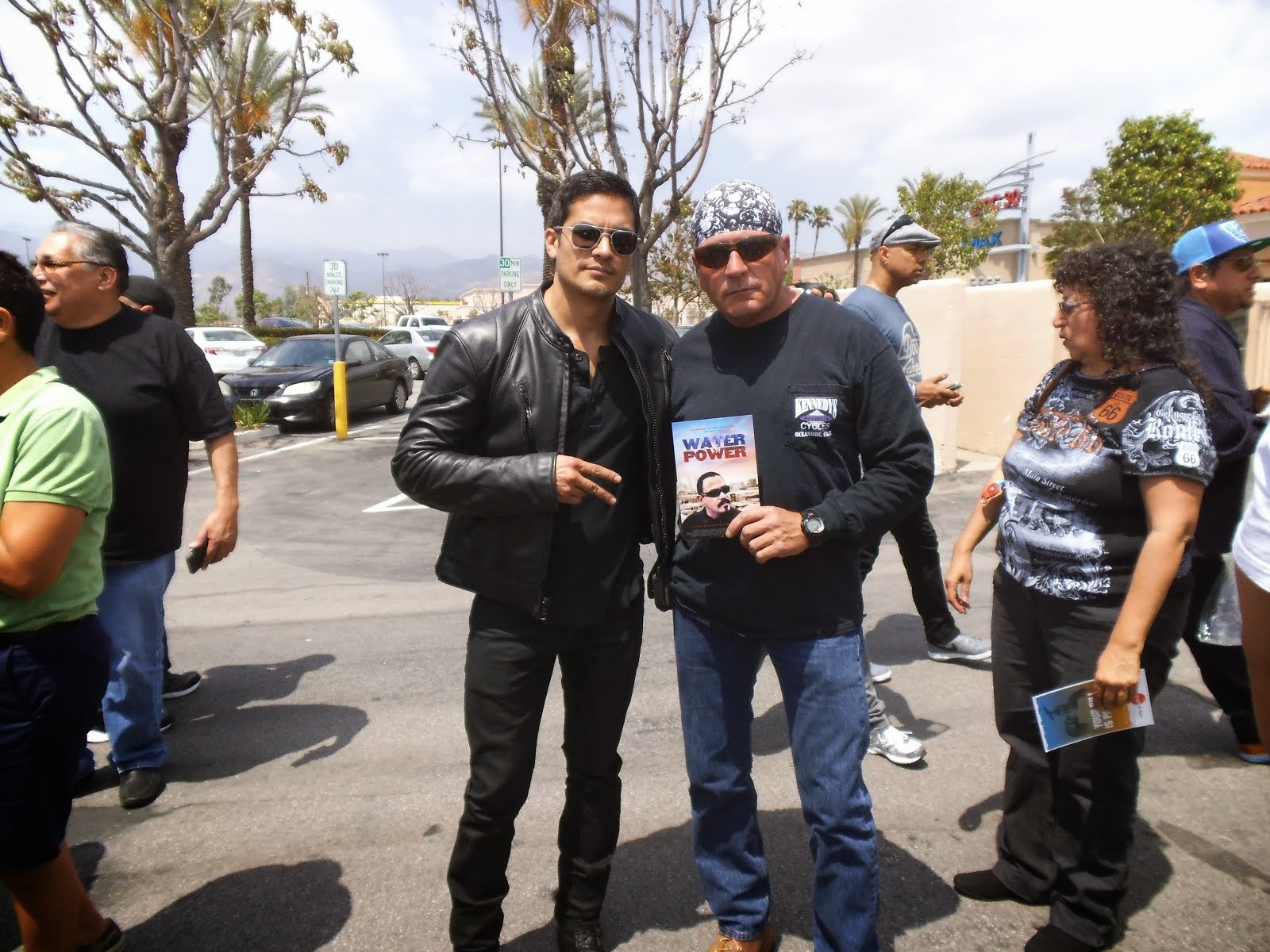OFF THE WIRE
A split on the meaning of the Speedy Trial Act
Bloate v. United States, opinion recap
Check the Bloate v. United States (08-728) SCOTUSwiki page for additional information.
If Congress could shift its attention away from health care reform for a few minutes, it would learn a valuable lesson from yesterday's seven-to-two decision in Bloate v. United States: write more clearly when writing federal law!
In Bloate, the Court held only that a delay which results from time spent preparing pretrial motions cannot be automatically excluded under the Speedy Trial Act, which requires that a criminal defendant be brought to trial within seventy days of being arraigned or indicted, whichever occurs later. Rejecting the interpretations of eight federal courts of appeals, the Court held that such time can instead only be excluded from the speedy trial clock if the district court finds, on the record, that granting the extra time serves the ends of justice.
It would be easy to think of Bloate as a simple case of statutory interpretation. But several aspects of the decision should send a message to Congress when it writes these federal laws.
Everybody involved in Bloate agrees that criminal defendants should not be allowed to delay their proceedings by requesting an extension of time—here, an extension of time to prepare and file pretrial motions–and then take advantage of that delay by arguing that the delay prejudiced their right to a speedy trial. Unfortunately, Congress did such a poor job of drafting the Speedy Trial Act that it took six months for the Court to decide what section of the Act excludes that delay from the speedy trial clock. And even then, the Court's decision prompted a strong dissent from the fairly unusual alliance of Justices Alito and Breyer.
Indeed, both the majority and the dissenting opinions in Bloate are reasonable and persuasive. As Justice Thomas notes for the majority, although the Act automatically excludes delay resulting from "other proceedings concerning the defendant," it excludes delay resulting from other "continuances" only if the district court finds, on the record, that the delay serves the ends of justice. The majority refused to read the automatic exclusions broadly–notwithstanding that Congress, in providing examples of such proceedings, said that the list was illustrative and non-exhaustive–because it felt that doing so would render the "ends of justice" provision meaningless, contrary to canons of statutory interpretation.
The dissent disputes some aspects of the majority's statutory interpretation, such as the assertion that delay in preparing a pretrial motion constitutes delay "resulting from any pretrial motion"–a meaningful distinction in a case like this one, in which the district court granted extensions of time to file a pretrial motion but no motions were ever filed. More importantly, the dissent deems it pointless to require district judges to make an "ends of justice" finding on the record, because they will always exclude delay resulting from a defendant's request from the speedy trial clock.
That ends-oriented analysis did not sit well with the majority, even though the justices have been conscious of the swelling federal docket and have demonstrated, in cases like Pearson v. Callahan, a desire to ease that burden. The statute simply proved too vague for the majority to justify that result.
So, in the end, even if the Court could not agree on how Congress expressed its intent, Congress always has the power to rewrite the Speedy Trial Act, and there is no doubt that busy federal judges would like Congress to clarify what seems clear: that delay resulting from a defendant's request for an extension of time to file a pretrial motion should be automatically excludable from the speedy trial clock to prevent creating a legal loophole for dilatory defendants.
skip to main |
skip to sidebar




Bill & Annie

Art Hall & Rusty


NUFF SAID.......


































































OOHRAH

ONCE A MARINE,ALWAYS A MARINE

GIVING BACK


MOUNT SOLEDAD














BIKINI BIKE WASH AT SWEETWATER










FRIENDS





BILL,WILLIE G, PHILIP










GOOD FRIENDS


hanging out

brothers


GOOD FRIENDS

Good Friends

Hanging Out




Bill & Annie
Art Hall & Rusty
Art Hall & Rusty


NUFF SAID.......



















NUFF SAID......



























Mount Soledad




BALBOA NAVAL HOSPITAL
RUSTY DANNY

ANNIE KO PHILIP

PHILIP & ANNIE

OUT & ABOUT

OOHRAH...

OOHRAH
ONCE A MARINE,ALWAYS A MARINE

ONCE A MARINE,ALWAYS A MARINE
American Soldier Network GIVING BACK

GIVING BACK
CATHY & BILL
PHILIP & DANNY & BILL

MOUNT SOLEDAD
bills today
EMILIO & PHILIP
WATER & POWER
WATER & POWER
bootride2013



BIKINI BIKE WASH AT SWEETWATER







ILLUSION OPEN HOUSE

FRIENDS


GOOD FRIENDS



BILL,WILLIE G, PHILIP









GOOD FRIENDS

GOOD FRIENDS
Friends
- http://www.ehlinelaw.com/losangeles-motorcycleaccidentattorneys/
- Scotty westcoast-tbars.com
- Ashby C. Sorensen
- americansoldiernetwork.org
- blogtalkradio.com/hermis-live
- davidlabrava.com
- emiliorivera.com/
- http://kandymankustompaint.com
- http://pipelinept.com/
- http://womenmotorcyclist.com
- http://www.ehlinelaw.com
- https://ammo.com/
- SAN DIEGO CUSTOMS
- www.biggshd.com
- www.bighousecrew.net
- www.bikersinformationguide.com
- www.boltofca.org
- www.boltusa.org
- www.espinozasleather.com
- www.illusionmotorcycles.com
- www.kennedyscollateral.com
- www.kennedyscustomcycles.com
- www.listerinsurance.com
- www.sweetwaterharley.com

Hanging out

hanging out
Good Friends

brothers
GOOD FRIENDS

EMILIO & SCREWDRIVER

GOOD FRIENDS
Danny Trejo & Screwdriver

Good Friends
Navigation
Welcome to Bikers of America, Know Your Rights!
“THE BIKERS OF AMERICA, THE PHIL and BILL SHOW”,
A HARDCORE BIKER RIGHTS SHOW THAT HITS LIKE A BORED AND STROKED BIG TWIN!
ON LIVE TUESDAY'S & THURDAY'S AT 6 PM P.S.T.
9 PM E.S.T.
CATCH LIVE AND ARCHIVED SHOWS
FREE OF CHARGE AT...
BlogTalkRadio.com/BikersOfAmerica.
Two ways to listen on Tuesday & Thursday
1. Call in number - (347) 826-7753 ...
Listen live right from your phone!
2. Stream us live on your computer: http://www.blogtalkradio.com/bikersofamerica.
A HARDCORE BIKER RIGHTS SHOW THAT HITS LIKE A BORED AND STROKED BIG TWIN!
ON LIVE TUESDAY'S & THURDAY'S AT 6 PM P.S.T.
9 PM E.S.T.
CATCH LIVE AND ARCHIVED SHOWS
FREE OF CHARGE AT...
BlogTalkRadio.com/BikersOfAmerica.
Two ways to listen on Tuesday & Thursday
1. Call in number - (347) 826-7753 ...
Listen live right from your phone!
2. Stream us live on your computer: http://www.blogtalkradio.com/bikersofamerica.
Good Times
Hanging Out

Key Words
- about (3)
- contact (1)
- TENNESSEE AND THUNDER ON THE MOUNTAIN (1)
- thinking (1)
- upcoming shows (2)
Blog Archive
-
▼
2010
(4242)
-
▼
March
(318)
- Report From Arizona
- ABATE LOCAL 6 MONTHLY BUSINESS MEETING
- Obama Steps Up Confrontation
- Request Human Rights Assistance & Proposed Amendme...
- Ariz. bill would let motorcyclists weave through P...
- B.C. to change motorcycle licensing
- Illinois Senate rejects law requiring youth motorc...
- “THE BIKERS OF AMERICA,THE PHIL AND BILL SHOW”
- Memo to my Friends
- BOTH HOUSE AND SENATE HEALTH BILLS REQUIRE THE MIC...
- Hells Angels kids’ club
- Comancheros believed to have smashed Holden Commod
- Angels ordered to quit Amsterdam territory
- Mongols biker pleads not guilty to acts with minor
- Bandidos bikie pleads not guilty
- Lone Wolf bikie jailed for 16 years for cutting of
- Germany goes full throttle against biker gangs aft
- Call to Action
- The B.A.D. Perspective
- Mission Statement
- Ex-Highwaymen leader pleads guilty to racketeering
- More than mobs to worry about
- to screwdriver@alphabiker.comccstrokerz383@gmail.c...
- Pagans want seized material barred from trial
- Bikie to take stand on Monday
- Hemet residents rally in support of city, law enfo
- Bikers had secret police documents, court hears
- "B.A.D." Work
- Power outage a chuckle
- Our sister needs your support,regarding Janet Hoga...
- “Two Wheel Thunder” with motorcycle Icons, Michele...
- Longtime biker sentenced to 15 years in prison
- Bandidos gang in turmoil after arrests
- Truck torchings may be latest attack on Hemet police
- Police Gear Up For Third Annual Motorcycle Safety ...
- Ex-Highwaymen leader pleads guilty to racketeering
- As we prepare for our inaugaral Support Jam this S...
- MI helmet law statistics
- Sparks Police Cite 68 for Lack of Proof of Insurance
- Our sister needs your support
- Helmet court
- Michigan HB 4747 (CLEAN BILL) House vote tomorrow.
- Here are the TACTICs government now uses against you
- Latest Drug in Middle School - 'Dusting' YOU MUST ...
- S3081 Enemy Belligerent Interrogation, Detention, ...
- Helmets - No List No Law effort in NY
- Medical marijuana users risk job loss
- Jesse James CHEATER!! NUDE PIX OF MISTRESS
- I.E. police blame motorcycle club of threats
- Sentencing is delayed for Virginia businessman in ...
- Biker Club Members Keep Salem Home From Going Up i...
- Skid-lid bikers shielded by helmet standards
- The American Veterans Traveling Tribute Wall
- Samuel Adams
- More U.S. "Traitor" countries moving to China
- Latest from Florida
- Unless it has MG as part of the rocker, it's a clu...
- “THE BIKERS OF AMERICA,THE PHIL AND BILL SHOW”
- CONTINUED,Southern Oregon Motorcycle Club Member S...
- Son of Pagans vice president held pending trial
- Southern Oregon Motorcycle Club Member Sentenced
- Real answer to your Theology question from a chemi...
- Gangs ?
- Health Care Mandate to Be Enforced by IRS 'Bounty ...
- Southern Oregon Motorcycle Club Member Sentenced
- SHOW and BLOG
- Riverside CA
- CONTINUED READ ON !!!!From: China Drawing High-Te...
- More U.S. "Traitor" countries moving to China
- Motorcycle club collects for veterans, children
- Who Voted How
- Presley takes aim at Outlaws again
- Son of Pagans vice president held pending trial
- Motorcycle club collects for veterans, children
- Legislation intended to help regulate motorcycle n...
- B.C. to change motorcycle licensing
- Motorcycle riders may be sent to driver school
- Get Your $2 DOT Chinese Helmets Here!
- Florida received 1 million dollars!! WHERE DID IT ...
- another bill to "protect you"?
- Doc's Freedom Ride
- Theological question
- HR 645 / U.S. Preparing For Civil Unrest
- NYC cops sorry for pounding couple's door 50 times
- Illinois Senate rejects law requiring youth motorc...
- Ariz. bill would let motorcyclists weave through P...
- California declares war on biker gang accused of '...
- Youtube Videos of Illusion Motorcycles
- Defeat of SB 2535 (under 18 motorcycle helmet bill)
- New World Order and Motorcycle Clubs
- Thousands of motorcyclists protest in France
- Need an answer to a question
- Get Your $2 DOT Chinese Helmets Here!
- US Department of Transportation Calls For End to A...
- HOUSE COMMITTEE APPROVES LANE SPLITTING IN ARIZONA
- Hells Angel charged after cash found
- Stunt Rider defies grim reaper
- Traveling Vietnam Veterans Wall stops in Lawton
- Harley-Davidson Stock Price Surged On Takeover Spe...
- Patriot Guard Riders raise money for flight
-
▼
March
(318)
Bikers of America, Know Your Rights!... Brought to you by Phil and Bill
Philip, a.k.a Screwdriver, is a proud member of Bikers of Lesser Tolerance, and the Left Coast Rep
of B.A.D (Bikers Against Discrimination) along with Bill is a biker rights activist and also a B.A.D Rep, as well, owner of Kennedy's Custom Cycles
